Is it possible to laminate and still have a low-waste, sustainable classroom?
Sustainability has become a very significant part of everyday curriculums. I=n my opinion, it should be even more important since we live in an age when we are witnessing the steady decline of various ecosystems, and unfortunately, a steady increase of pollution and destruction. One of the topics that surfaced in teacher groups is laminating: How to laminate with low waste and keep your classroom environmentally friendly?
Despite being genuinely inclined towards outdoor education and environmental education, I can’t help but love worksheets and flashcards. I love to use them, design them, and share them with my colleagues. As a preschool teacher who teaches English in a non-native country, flashcards are a must, and practicing graphomotor skills is crucial. Our main alphabet is Cyrillic, which means that children first learn the Cyrillic, and then the Latin alphabet.
Since I started this article with a grim premise, I need to continue with a happy thought. Yes, you can laminate with low waste. Here are some things you need to do to make the laminating almost completely waste-free or low-waste.
7 low-waste things to do when you laminate for your classroom
1. Don’t laminate every single piece of paper.
Do you really need to laminate that paper you will use only once? Reflect on your practice and think about the following things: What are my favorite activities? Which lesson plans do I plan to adapt, improve, and use again? Are these activities effective? Do my students like the activities as much as I did?
2. Laminating flashcards is completely all right!
Flashcards are usually printed in color. If you are an ESL teacher who teaches young learners, or very young learners, they are the best way to introduce or review vocabulary visually. Yes, you can watch videos or use realia, but you cannot hoard 3456 objects in your classroom for show-and-tell. Teaching 4-year-olds English requires a lot of visual input, preferably a tactile experience, touching the flashcard. Wasting the color from the printer, cardboard, and paper happens every year. If the little ones ripped every single polar bear or fox flashcard you had, that’s really not sustainable. (I cried for my polar bears.)
3. What to do with the excess paper when you cut up the flashcards?
Collect the biggest pieces and put them in the recycling bin. Use the pieces you want to save for crafting. If the pieces are very tiny, put them in your compost. If you don’t have compost at school or home, throw them anywhere where you see a patch of ground. Make sure that you are not littering in very public places. I sometimes do it behind my building. Bring it to a public garden or plant the paper in the pots on your terrace or in your room. That’s another way to help paper decompose quickly!
4. What to do with the excess plastic when you cut up your flashcards?
Try to order the papers between the laminating sheet to have a minimum of blank space among the flashcards. Then, when you cut them up, you can use the small pieces for sensory bottles (if you teach in preschool). It will take you months to fill one shampoo bottle and make a sensory bottle, and you can fit a lot of tiny remains inside.
Another option is to make an eco brick. I still have the only eco-brick I ever made, and it fills up very slowly since I always cut up the materials in the tiniest pieces possible. Eco bricks have plenty of uses, but you will need a lot of them to make something. This is great because you can collect them for years.
Finally, make a bench in your neighborhood by adding cement. (That’s what I plan to do. The possibilities are endless.)
5. Do not print!
Yes, this may sound impossible, but it actually isn’t. I often get very quality catalogs, and I use them to make DIY flashcards! They look so sleek and professional, and I love collecting and reusing printed materials in this way. You can collect photos for food and drinks, action verbs, emotions, furniture, appliance, rooms around the house, clothes, school supplies, and much more. 90% percent of my basic English flashcards are from magazines and catalogs. I also use some of them for practicing grouping and elementary mathematics.
When you finish with the materials and if they bore you after a few years, share them! Give them to a homeschooling family or share them with other teachers. You can even give them to your local NGO so that they can be reused in their projects. If you are in need of money, you can even sell them if you want – the possibilities are endless!
7. Finally, if you really feel the need to laminate, laminate only papers that are printed in color, given that you will reuse them 100%.
Am I going to use this ever again?
If you are a ‘laminator addict,’ find a teacher who isn’t and ask for assistance. Discuss with someone every time you wish to laminate something and ask yourself out loud: Am I going to use this ever again?
Now, the thing that I haven’t mentioned is that I love my laminator. It’s given me a lot of opportunities to create something amazing! I also plan on gifting some DIY flashcards to my fellow teachers. I’ve never met a teacher in Serbia with a laminator, and I was so happy when I finally found an affordable one.
I love to laminate – here are some low-waste classroom examples of the amazing things I’ve created for my versatile classroom so far:
- A whole set of catalog alphabet flashcards in Serbian for students who come to our mentorship program. I created this set particularly created for a boy who had problems with distinguishing letters. A lot of kids pass through there, and this way we can protect the flashcards, and reuse them for a long time. All created by cutting up catalogs!

2. When the children in our mentorship program finish their homework, they can have fun, play games, and still keep learning with these laminated worksheets. I cut out these puzzles and worksheets from an educational children’s magazine – they are not printed. This way, the children can write, clean the papers, and then use them another time, which is another way of keeping our classroom low-waste. There are two sides to every paper – the back is not blank, there is another page with worksheets, so the laminating sheets are used meaningfully 100%.
I especially love this set because it promotes caring for the materials and sharing between children. I wanted these to be sturdy since I cannot monitor all children, and plastic pouches wouldn’t work in this case since they love to take everything out and crumble the paper. Also, we can use it with new children when we restart the program every other month.
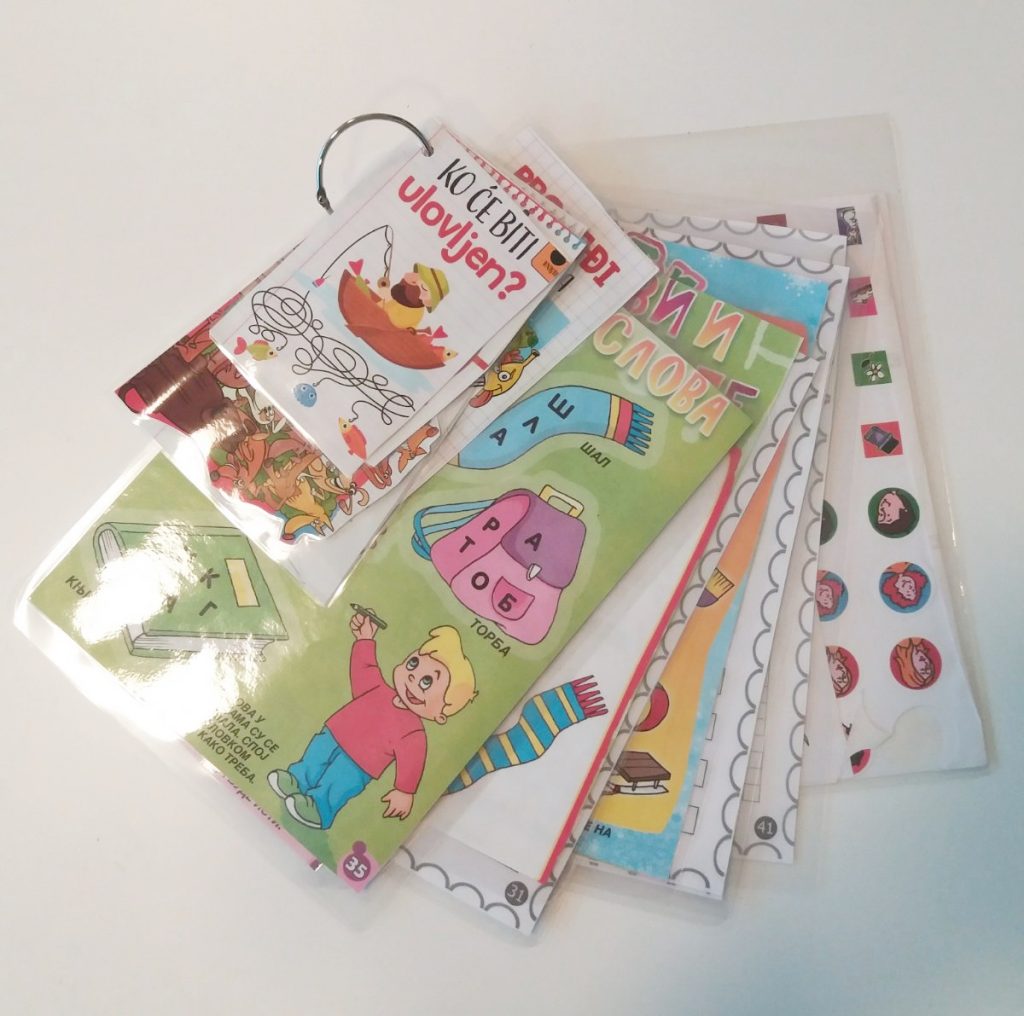
3. Personal newspaper flashcard collection – The picture shows only some action verbs, and the flashcards are big, and they look really nice. I’ve used them many times, and I am currently building up my newspaper collection of fruits, vegetables, and other daily items.
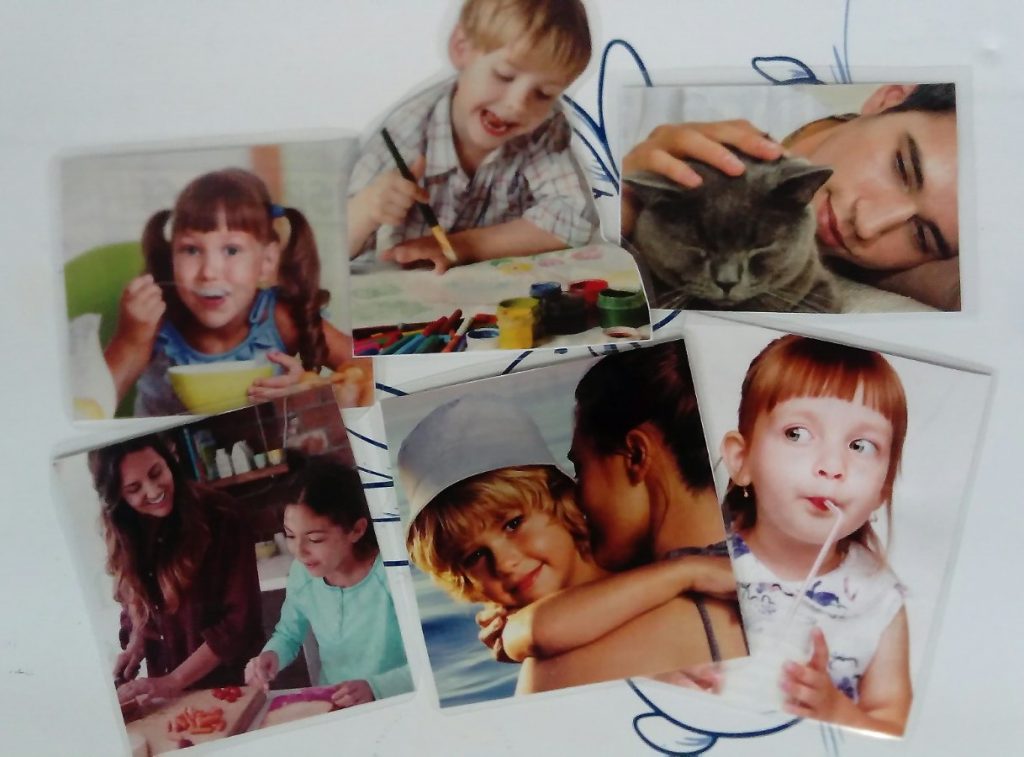
4. A3 size catalog flashcards – I love these because they are so big and clearly show the house’s rooms. These big flashcards are truly a gem in my collection!
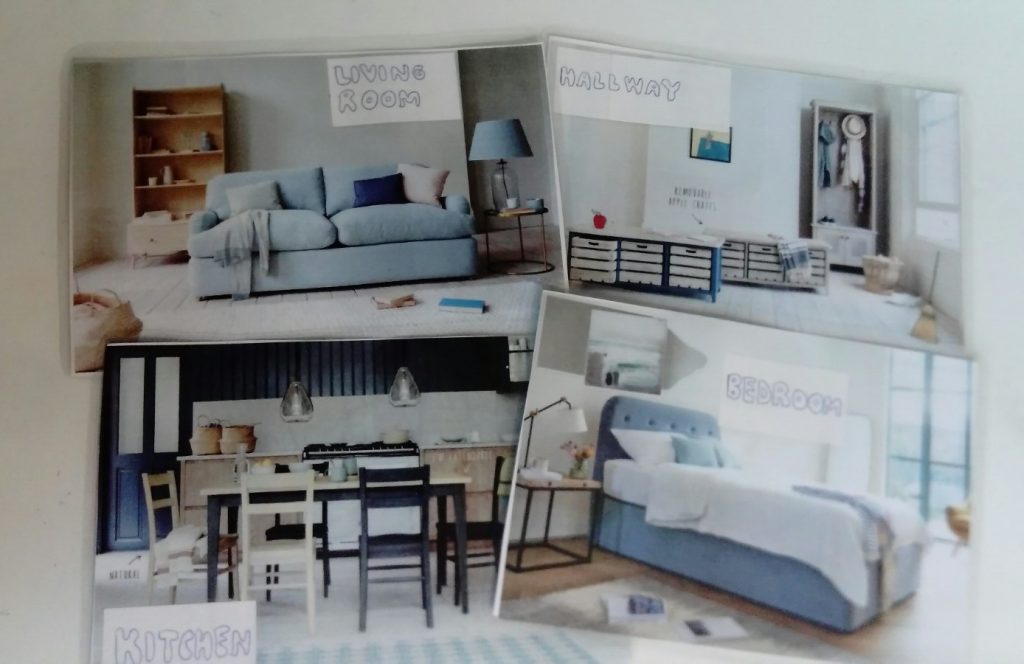
To conclude, let’s repeat the question we started the article with – Is it possible to laminate and still have a low-waste, sustainable classroom? If you have any ideas on how to make it more sustainable, please write in the comments. I love laminating, I started it just 6 months ago, and I am open to great ideas! :)

Click here to explore my store where 99% of materials are forever free!
All the materials except lesson plans and 30+ page interactive activity books will be free FOREVER! Why? Because sharing is caring, and 2020 hasn’t been kind to all of us. Please consider donating so I can keep making FREE materials for everyone and keep my website open for all of you.
Don’t forget to leave a review when you download materials! It’s just a minute of your time, and it means a lot to me.
P.S. The store and the freebie library are not the same thing – the freebie library has some extra materials like conference presentations and webinar recordings which are not available in the store ✨
The subscription link for the store is below my bio in every post. ?





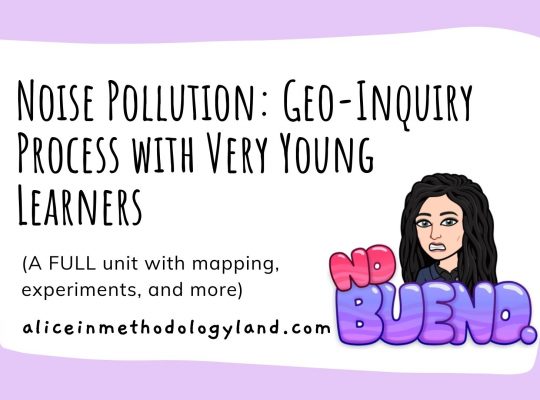



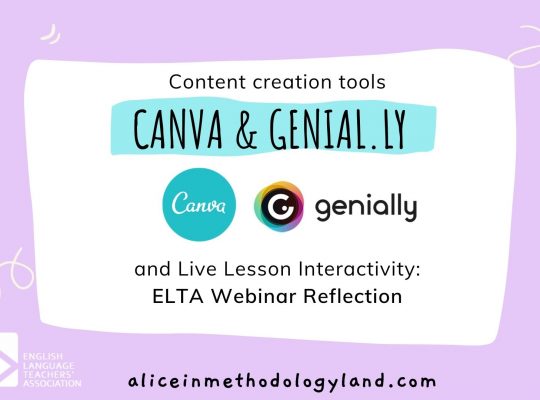
[…] holidays always leave enormous piles of garbage behind them, and teachers need to try to reduce the ELT footprint in any way possible. Keep reading this post to see how you can make a low-waste Halloween […]
[…] I created a DIY collection of color flashcards collected over the years (cut the images from newspapers and catalogs and laminated them), (read this post – How to Laminate With a Low-Waste? – Strategies for a Sustainable Classroom) […]
[…] always leave enormous piles of garbage behind them, and teachers need to try to reduce the ELT footprint in any way possible. Keep reading this post to see how you can make a low-waste Halloween […]